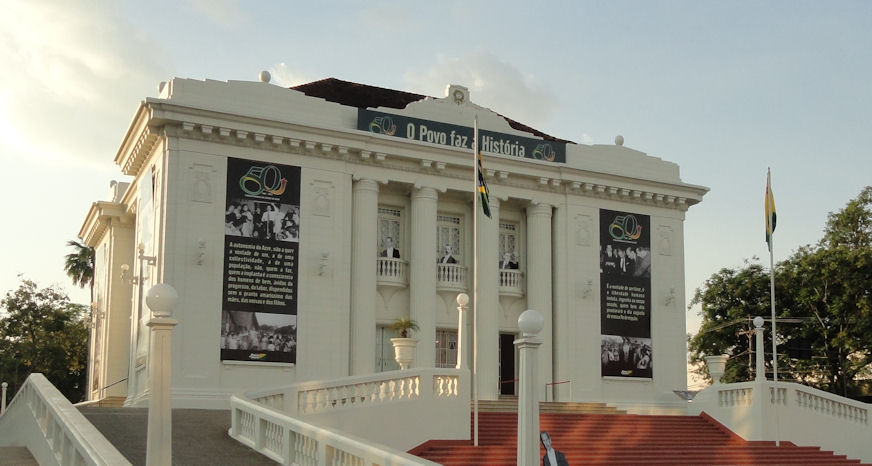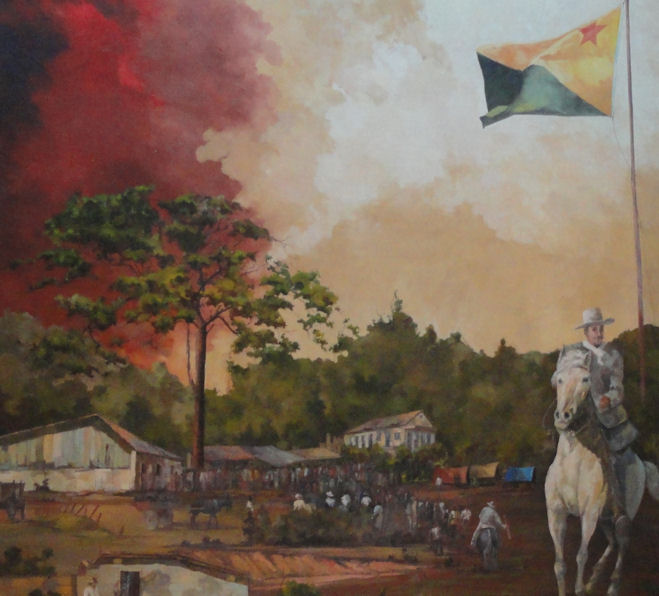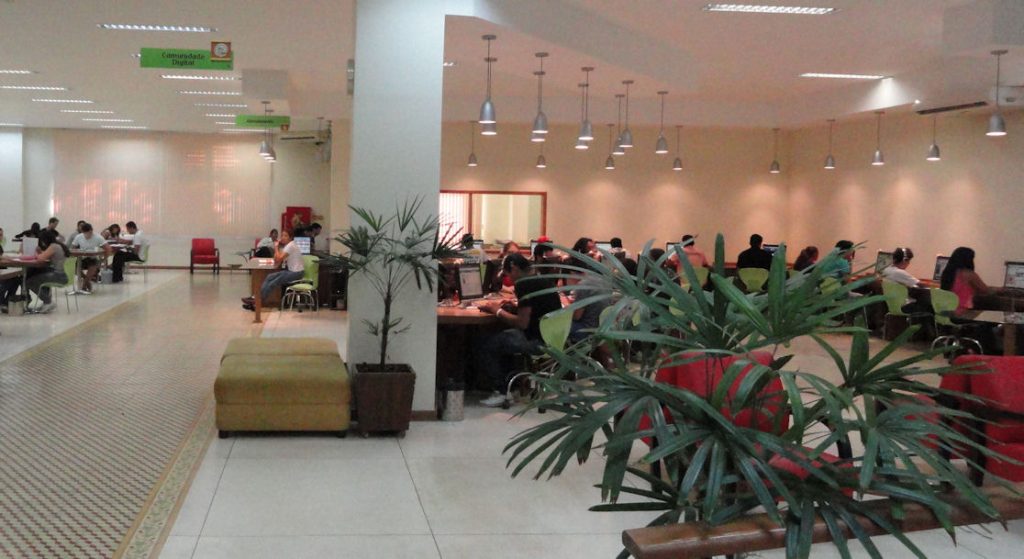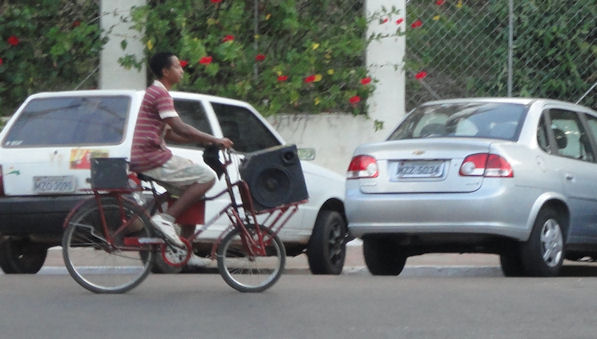
Acre is as far away as you can get and still be in Brazil. The flight takes about 3 ½ hours from Brasília and there is a one-hour time change. You cannot get lost at the airport. There are two gates and the flight I left on at 2:55 am left from both. There are not many options. The Gol flight leaves at 2:55am; Tam goes at 2:15. If you miss that you have to wait twelve hours. The airport has no self-check in, so you get to wait in the lines. I was in Rio Branco to participate in visits related to the U.S.-Brazil school principal program and to meet people in general. We don’t get to Acre very often and people are interested to see us. I was interviewed by two television stations, the local newspaper and the major radio station.

Acre’s capital, Rio Branco, is medium sized city with about 400,000 inhabitants; this is half the total population of Acre. There are no very tall buildings. It has a generally open and suburban feel. The parallel is not perfect, but it reminded me of Montgomery, Alabama in the way it was spread out. I think the reason I thought of Montgomery, however, was the old governor’s residence. It has that southern feeling. Look at the picture above and tell me that it doesn’t remind you of the U.S. Deep South. The people of Acre also have a kind of rebel heritage. They broke free from Bolivia a little more than a century ago. The border was finally settled by the Treaty of Petropolis. The great Brazilian diplomat, the Baron of Rio Branco negotiated the agreement, which is how the capital of Acre got its name. The city spreads out over some low hills more or less along the Acre River. I was there during the dry season, so it is hot but not very humid. During the wet season it is a bit cooler but more humid. It almost never gets cool. They told me that occasionally a front moves in from Antarctica and it can get as cold as about 50 degrees F or about 10 C. This doesn’t happen often.
On the flight in, I looked out over the forests and fields. The forest here is semi-deciduous tropical forest, i.e. lots of the trees lose their leaves during the dry season. Acre is part of the Amazon forest, but it is not covered by rain forests in the true sense, since there is not much rain for much of the year. It is not an unbroken forest as you notice when you fly over the Amazon going toward Manaus. Especially near the city, there are lots of farm fields with cattle. They look funny from the height of the airplane as you come in for a landing. They are mostly off white. You cannot really make out their shapes but you see clusters of elongated white dots.

There are water shortages during the dry season, streams run dry and rivers get low. They turn off fountains and are generally careful to conserve water. This is different from Brasília, which has a unique relationship with water. Although Brasília has a dry season too, water shortages never develop. I think Lake Paranoá has a lot to do with that.

I stayed in the Inacio Palace Hotel. It was simple but not bad and they had free Internet. It is evidently owned by the same guy who owns the Pinheiro Palace Hotel across the street, because you have to go there to get breakfast. In the same building as the Inacio Palace, however, there is a good churrascaria.
According to what I was told, most of the people living in Acre came from the Northeast of Brazil, especially Ceará, but there is a significant mixture of Arabs of Lebanese extraction and native Indians. The place used to belong to Bolivia, but they weren’t really using it and lots of Brazilians moved in to tap rubber in the late 19th Century. Since almost nobody else lived here at the time, even a relatively small influx of Brazilians immigrants was enough to tip the balance and soon Brazilians were the most numerous. When the Bolivians tried to reassert their authority over Acre, the Brazilian population rose up in armed rebellion, defeated the Bolivians and declared themselves an independent state. That didn’t last very long. But they tried it again. This time the Brazilians asserted sovereignty and Acre became a territory of Brazil. It was not until fifty years later that it became a state.

The 100th Anniversary of Acre independence declaration in August 7, 2012, so if you are reading this on that day, raise a toast. This period of independence, no matter how brief and inchoate, seems to have shaped Acre’s attitude. At our meeting, they placed the Acre anthem instead of the Brazilian one and they refer to things that happen “in Brazil” as if there is an important distinction. I was told that was because the people of Acre won their own independence at the cost of their own blood, sweat, toil and tears and only later did the choose to become part of Brazil.
My pictures: Up top is the Governor’s palace, now a museum. That and the picture below made me think the city had an Alabama feel. Below that is the public library. They get a good crowd. The little girl reading at the library was iconic. The bottom picture is an election program. They have car, motorcycles and even bikes circulating on the streets with boom boxes with political advertisements and catchy songs.
